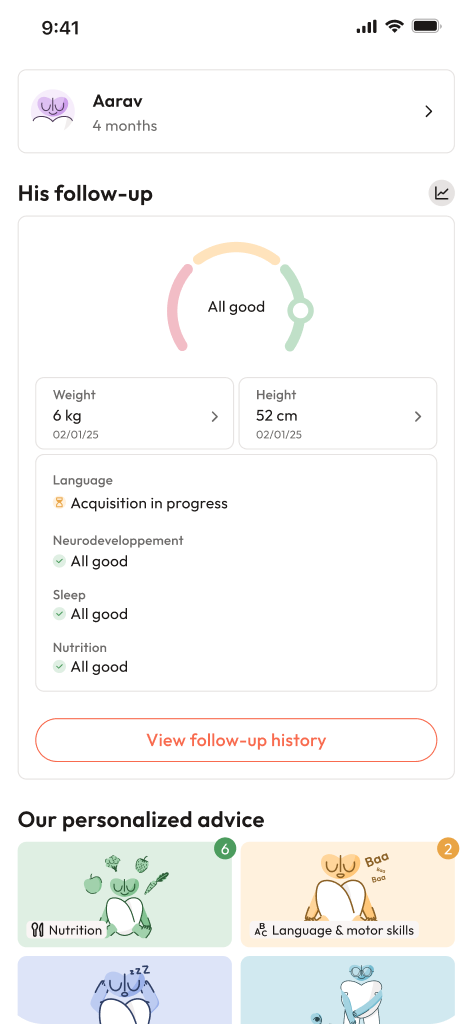Bracing for the unpredictable rhythm of labour and delivery, many parents find their thoughts clouded with worries. You might wonder—what happens if the cervix does not budge, if labour refuses to begin even when the countdown has reached its final tick? For those whose cervix remains closed, rigid, or simply unyielding as the due date approaches, the suggestion of a Balloon catheter induction can trigger a flurry of questions. Is this truly gentle? Does this method really work? Is it going to cause discomfort, or raise any safety flag for the baby? If you’re striving for a birth experience that’s as natural as possible, these concerns naturally bubble up. Here, clarity paves a path: What exactly is Balloon catheter induction? Why is it suggested? How is the process carried out? What are the real benefits, the limitations, and the alternatives? Let’s untangle each element with precision—so you step into labour preparation with your decisions respected, your options well-rounded, your care team’s language demystified.
What is balloon catheter induction? A mechanical approach to the cervix
Picture this—a narrow, soft tube, called a catheter, with a miniature balloon at one end. Its mission? To gently encourage an unready cervix to soften, thin, and open, helping the body take the first steps towards labour. This Balloon catheter induction, sometimes referred to clinically as Foley balloon or cervical balloon ripening, is completely mechanical—meaning, rather than resorting to medicines, it leans on the body’s physiological response to gentle, continuous pressure.
How does this mechanical nudge work in plain words?
- The balloon is passed through the cervix (the doorway between uterus and vagina), then inflated—often with around 30 to 50 ml of sterile saline.
- Once in place, the balloon applies light but steady pressure on the cervix. This prompts it to remodel: collagen softens, local prostaglandins are released, the tissue shortens (effacement) and starts dilating.
- Some devices feature two balloons (the Cook system) for a “sandwich” effect, applying pressure above and below the cervix, minimising slippage and giving more stability.
- Labour contractions? Not always straight away. Sometimes the balloon merely acts as a gentle opener, and medications like oxytocin or even an amniotomy (artificial rupture of the membranes) come next if required.
Why does this matter to parents? Unlike the hormonal route, Balloon catheter induction sidesteps medicines initially, gives more control, keeps the risk of overactive contractions lower, and can be reversed simply by removing the catheter.
Types of balloon catheter devices and how they work
Single-balloon (Foley): Simplicity at its core—one balloon, sitting snug just above the cervix, often used across both inpatient and outpatient settings. Volume adjusted to individual comfort.
Double-balloon (Cook): Think of this as a two-sided doorstop. One balloon anchors in the uterus, the other in the vagina, pressing the cervix between them. This design reduces movement and can be helpful in some anatomical situations, though some find it brings a fuller sensation.
Placement and feel: Expect a few minutes on the examination table, sometimes with a speculum, sometimes just the gloved hand of a clinician well-versed in the art. The procedure is swift—most catheters are positioned in about 5 to 10 minutes. Some people feel pinching or cramping, others mostly pressure. The device settles in for six to twelve hours (or less, if the cervix yields early and the balloon falls out naturally).
When and why is balloon catheter induction recommended?
Medical situations often call the shots:
- Post-term pregnancy, when that due date comes and goes
- Hypertensive disorders like preeclampsia
- Diabetes with maternal or fetal impact
- Suspected fetal growth restriction
- Waters have broken (PROM), but the cervix stays stubbornly closed
The real game changer: Balloon catheter induction works especially well if the Bishop score (a way of rating cervical readiness) is low—closed, firm, not yet ready for action. Preparing the cervix mechanically can raise the odds of natural vaginal birth, especially important if you wish to avoid stronger interventions from the outset.
And for parents who have had a previous cesarean section or are seeking a VBAC (vaginal birth after caesarean)? Balloon catheter induction comes into its own. Unlike prostaglandin medications, which carry a higher risk of uterine overactivity in a scarred uterus, the balloon’s gentle stretch is usually better tolerated.
When should balloon catheter induction be avoided or used with caution?
Here comes nuance—some situations call for a pause:
- Placenta previa, where the placenta blocks the cervix—catheter could cause bleeding.
- Active genital herpes, unexplained vaginal bleeding, or severe distress requiring immediate delivery? The balloon is not for these scenarios.
- Breech babies, multiple pregnancies, major polyhydramnios (lots of amniotic fluid), signs of major disproportion between baby and pelvis—each requires careful, often individual assessment.
- Suspected infection, known allergy to the catheter material, membranes already ruptured—local policy is the referee.
Again, dialogue with your obstetrician remains at the centre; no single approach fits all.
How is balloon catheter induction actually performed? Step by step for parents
- Preparation and consent: First, your team discusses the reasons, alternatives, and likely course. Measurements—blood pressure, pulse, temperature, a cervical “Bishop score”, fetal well-being—all get checked. Consent is always taken.
- Strict asepsis: Sterile gloves, well-prepped equipment, and a gentle, skilled hand keep infection risk minimal.
- Placement: Recline comfortably; some use a speculum, others simply a gloved finger guiding the balloon through the cervix. Inflation is gradual, monitoring comfort throughout.
- After the procedure: Fetal heart rate is rechecked, checking both mother and baby are adapting well. Ongoing observation usually follows, but often, walking or showering is allowed, if safe.
What happens next? Sometimes, the balloon slips out on its own, a sign the cervix has reached around 3 centimetres of dilation—a little landmark on the way to labour. Other times, the team will remove it, reassess, and possibly move to the next induction step: amniotomy or introducing oxytocin.
How does balloon catheter induction feel? Getting comfortable
- Cramping, much like strong period pain, is common after insertion.
- A foreign body sensation or fullness in the vaginal area can occur, especially with double-balloon types.
- Some spotting or light bleeding is expected, as are increased vaginal secretions.
Comfort tips abound. Think movement—walking, shifting position, even bouncing gently on a birth ball if allowed. Warm showers, breathing techniques, heat packs, gentle massage, and the steady encouragement of a trusted companion—all can make the wait more tolerable. For those needing more, oral painkillers or nitrous oxide (where available), and for persistent pain, even an epidural may be considered.
Measuring effectiveness and anticipating outcomes
Studies covering hundreds of parents underline that Balloon catheter induction often achieves its aim: a softened, opening cervix and a good chance at vaginal delivery. The pace? Highly variable—some see labour within twelve hours, others not for a full day. If needed, combining mechanical methods with medications (post-balloon) is common.
What truly shapes outcomes? The initial cervical status, the indication for induction, birthing history, baby’s position and size—more than just the method chosen. VBAC candidates in particular see a benefit, with less risk of uterine over-activity.
Benefits and limitations: The real-world balance
Benefits at a glance:
- Mechanical (no initial medication)
- Reversible—balloon can be removed instantly if needed
- Lower chance of uterine hyperstimulation compared to many drugs
- Greater movement possible during ripening
- Favoured when there’s a uterine scar or for VBAC
Limitations:
- Placement and ensuing hours can be uncomfortable or even painful for some
- Labour onset may take longer than with some pharmaceutical options
- Not suited to all obstetric scenarios (placenta or blood vessels near the cervix, for example)
- As with all induction steps, some will still need later medication, vacuum or forceps assistance, or a surgical birth.
Side effects, risks, and red flags: What parents should know
Frequent but manageable:
- Cramping, pulling feelings, or pelvic heaviness
- Light vaginal bleeding or increased discharge
Less frequent but more important:
- Infection (sterile technique drastically reduces this risk)
- Small tears to the cervix are rare
- Occasional accidental rupture of the membranes
- The balloon may become dislodged or come out early
- In very rare circumstances—cord prolapse, if the waters break with the baby still high up
Watch for:
- Severe pain that feels different from ordinary cramps
- Major or persistent bleeding
- High fever, strong-smelling discharge
- Noticeably decreased fetal movements
- Any sense that things are wrong
Immediate attention from your maternity team is a must should these arise.
Alternatives and combinations: Is balloon catheter induction the only option?
- Membrane sweep: A simple office procedure—gently separating the membranes from the uterus, stimulating local prostaglandin release (works best if cervix already a bit open).
- Prostaglandin medications: Gels, tablets, or pessaries placed in the vagina to soften and “ripen” the cervix—sometimes faster, but more likely to over-stimulate contractions.
- Oxytocin: Given by IV, best used once cervix shows some readiness, helping create regular, strong contractions.
Some teams combine methods, starting with balloon catheter induction and moving to meds or amniotomy as needed. The tailored plan—adapting to your unique history and baby’s position—is what counts.
Monitoring: Ensuring the well-being of parent and baby
Throughout Balloon catheter induction, your baby’s heart rate is closely observed: before, during, and after placement. If contractions pick up after the balloon, continuous monitoring may become necessary. After birth, newborns receive routine care and close follow-up if there has been any concern during labour.
Key Takeaways
- Balloon catheter induction is a medication-sparing, mechanical way to prepare an unready cervix for labour.
- Different devices—single or double balloon—offer tailored mechanical support to facilitate cervical changes.
- Common reasons to use this approach include past cesarean, an “unfavourable” cervix, or medical reasons such as hypertension or post-term pregnancy.
- The process is safe for most, with lower risks of overactive contractions compared to medications, but comfort and time to labour may vary.
- Parents should keep a close watch for specific warning signs but can often move about and use comfort techniques during this stage.
- Do not hesitate to consult your healthcare team about expectations, pain relief, or next steps.
- For more personalised advice and free health questionnaires for your child, you can explore the application Heloa.
Questions Parents Ask
Can I eat or drink while the balloon catheter is in place?
Often yes, especially clear liquids and sometimes light snacks—unless your hospital recommends otherwise, particularly if rapid surgery could become necessary. Some teams might recommend nothing by mouth for a few hours. Always clarify with your care provider for your specific situation.
Will placement require anesthesia or will I need to be asleep?
Almost never. The Balloon catheter induction is generally done with you fully awake, with only a bit of local anaesthetic gel or oral pain relief if required. Discomfort is generally short-lived—period-like cramps are common. If you’re especially anxious, request options for additional comfort.
Who can stay with me during the ripening process?
Policies vary. In most hospitals, one support person may remain by your side (except during short clinical checks or monitoring). If part of an outpatient protocol, your companion can usually stay with you at home. It’s good to ask for precise rules and discuss how your support person can contribute—sometimes a warm touch or encouraging word changes the whole experience.
What if the balloon falls out before labour starts?
This can mean the cervix has already started to open (often to 3 cm). Sometimes, labour soon follows. If not, your care team will check cervical status and plan next steps—perhaps medicines or rupturing the membranes.
What sensations should I expect?
Typical experiences include cramping, pelvic fullness, and light spotting. Pain levels vary greatly—some experience only a tug; for others, it is more intense. Unusual symptoms (sharp pain, heavy bleeding, fever) require prompt attention.
If I’ve had a previous cesarean, is this method appropriate?
Generally, yes—Balloon catheter induction is widely considered safe, especially for those wishing to attempt VBAC, since it’s associated with less uterine overactivity than many medicines. Every history is unique; your practitioner will guide the best approach.
Is infection a real risk?
Infection with Balloon catheter induction is rare, thanks to meticulous sterile precautions and vigilant follow-up. Noticeable fever, foul discharge, or escalating pain should always prompt contact with your care provider, just to be safe.
What are the alternatives if the balloon does not work?
Your team may consider prostaglandin medications, artificial rupture of membranes, oxytocin drips, or sometimes a surgical birth, depending on your cervical assessment and baby’s well-being. It’s a stepwise, adaptive journey.
How long does the whole process take?
From balloon insertion until active labour can be several hours to a day or more. Some parents progress rapidly, others in stages—patience, and frequent reassessment, are key.

Further reading :









